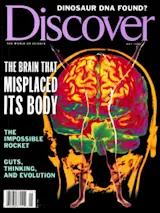Boy, was I relieved when I found out cigarettes aren’t bad for you!
It’s not as though I’ve had so much as a single whiff of tobacco in years, you understand. Nor am I even exposed to much secondhand smoke-- unless you count a sport jacket I used to wear during my tobacco-consuming days, which despite dozens of dry cleanings can still set off smoke detectors in three adjacent states. No, the problem is that my brand when I did smoke was Lark. In the gooey world of high-tar cigarettes, Larks were a virtual parking lot. Recognizing their product’s status as something less than a health food, the Lark manufacturers sought to capitalize on that shortcoming, providing proof-of-purchase seals that would allow smokers to send away for their own pulmonary embolism after their very first pack.
Given this, you can imagine my surprise when I discovered that despite all the ...














